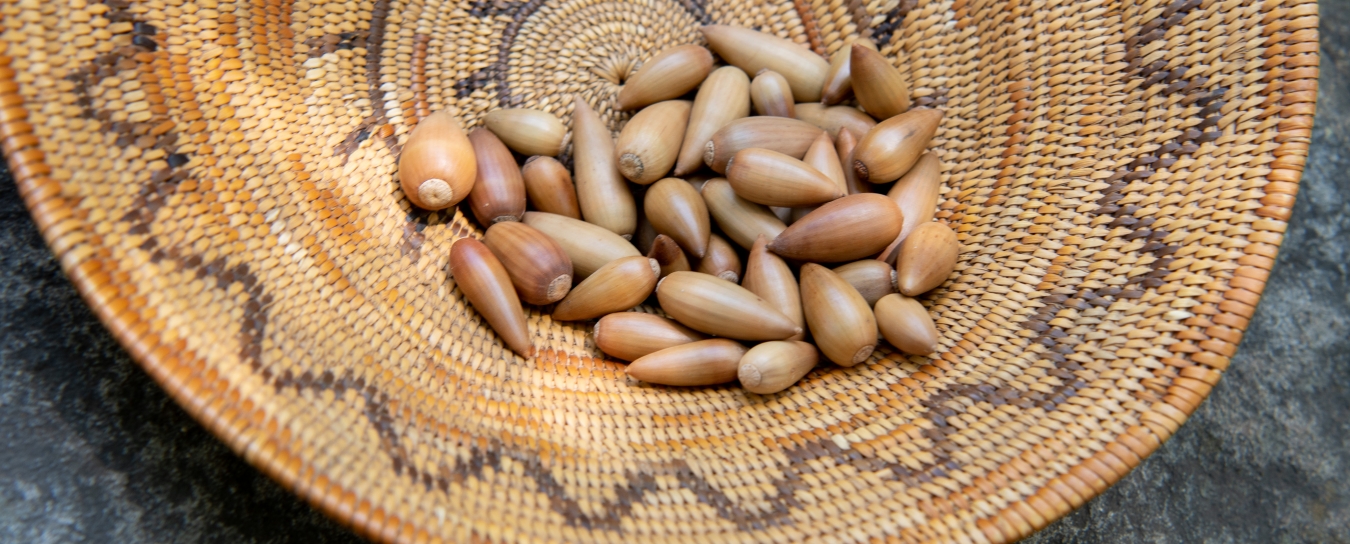
Anthropology
Check our anthropology FAQ for information about artifacts and more. Our Chumash Life pages for teachers and students provide a basic introduction to some aspects of traditional daily life.
- Anthropology
- Rocks & Fossils
- Invertebrates
- Vertebrates
- Botany
- Astronomy
- Fungi
- General
- Recently Asked
Spherical Chumash tool or ball?
Live in Oak View (Ventura County) near Ventura River. Dug up (within 12" from surface) this perfectly spherical shaped sandstone ball approx. 50' from house. Its diameter measures 2.825" and it weighs 1 lb and 0.375 oz. As most rocks here have been rounded to some extent through natural processes of river erosion, this rock seems different. It appears too perfectly round to be natural. To my knowledge, where found has never been disturbed. There is a seasonal spring and creek adjacent to house and evidence of past N/A habitation nearby. Could this be a hammerstone or other tool; or a ball used in a game?
Curator Response
Hi Spencer,
Thank you for asking about this interesting rock. We see no obvious signs of abrading from the photograph, so we suspect it is a natural spherical concretion.
As our geologists have noted in response to other questions, a concretion is a rounded lump of rock that accumulated around a nucleus of something different from the rest of the “host rock” where it formed. These can be very smooth and round, since as a rock becomes weathered (as you noted in your question) in a riverbed or by the sea, sharp edges are rounded off. Concretions are often mistaken for fossil eggs!
Concretions this beautifully spherical certainly do occur in nature. Many such spheres erode naturally from the sandstone formations in our area. Dr. Johnson has seen one vertical sandstone surface exposed along San Jose Creek near his home on San Marcos Pass, with numerous spheres eroding from it.
However, a natural origin does not rule out human interaction. In Marin County and the Mojave Desert, for instance, there have been sandstone concretions recovered archaeologically that have been modified to this very-round shape.
Today, people bring these in to the Museum to show us all the time. It could well be that Chumash Indians would pick them up too and carry them home. In archaeology we call items like this "manuports”: naturally formed objects that are transported by humans to archaeological sites.
Two very round stones about this size were recovered near the Mono Ranger Station in Los Padres National Forest. These are mentioned in Hudson and Blackburn's Material Culture of the Chumash Interaction Sphere, Vol. IV: Ceremonial Paraphernalia, Games, and Amusements (page 395) in reference to use in games such as shinny, but these games are documented ethnographically to use hardwood balls, not stone. It does not say if these were culturally modified into their round shape.
Speaking of concretions in that area, Mono Creek got its name from a “mono” (reported as a Chumash shrine) that used to exist near the Mono adobe. It actually consisted of a circular concretion that surmounted a second base, also of concretionary sandstone. This “monument” was said to have been erected by the Chumash, according to Stephen Bowers, who sketched it in 1878. The location was under the Mono Debris Dam apparently.
Further up the Santa Ynez River, near where Jameson Lake is now located, was once known as “Billiard Flats” because of the sandstone spherical concretions that once were commonly found there.
At least one of us has play-tested ball games with concretions. Nature Education Manager Sabina Thomas, Ph.D., (whose background is in geology) played bocce ball with fossilized urchins as a student on a field trip in Spain. They weren't all that spherical, but were rounded enough to work!
Based on the photo, it is difficult to say for sure if your concretion is culturally modified. It’s quite a good photo, but we’d want to put it under magnification in person to check it out. We'd be interested in looking at this sphere; if you want to visit us with it, please email us at johnj@sbnature2.org, sthomas@sbnature2.org, and bbarbier@sbnature2.org so we can arrange a mutually convenient time.
Stay curious,
Curator of Anthropology John R. Johnson, Ph.D., Associate Curator of Anthropology Brian Barbier, M.A., Nature Education Manager Sabina Thomas, Ph.D.


